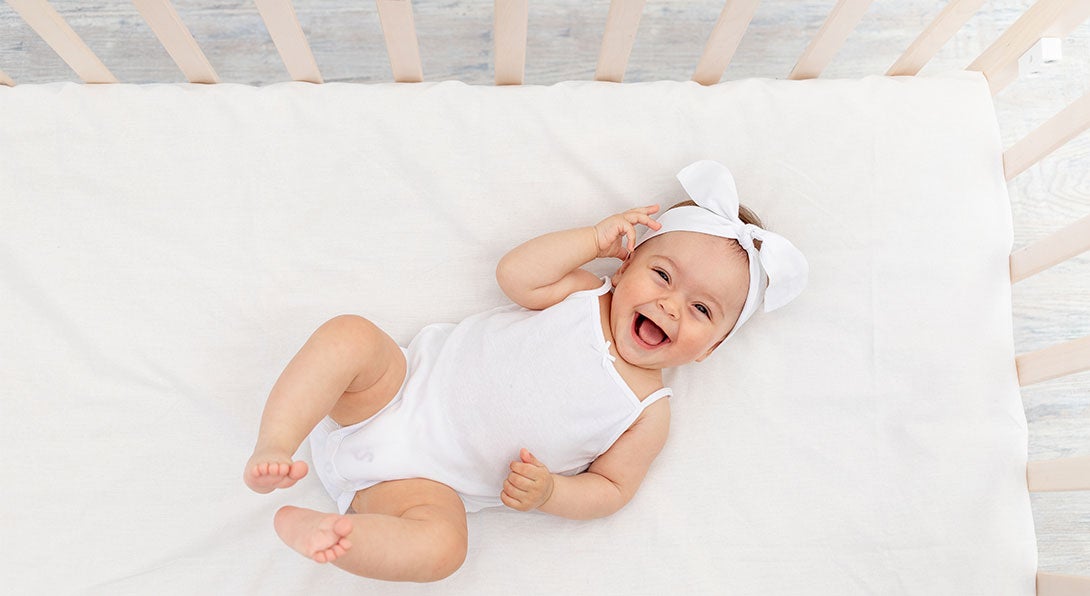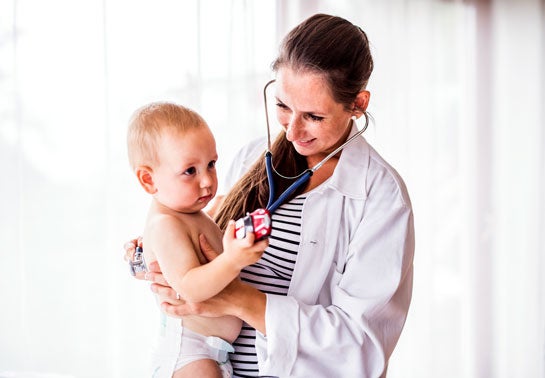Newborn Guide: Sleep and General Safety
Newborn Guide: Additional Topics
Topic: Sleep

Sleeping Position
The American Academy of Pediatrics recommends that all newborn babies be placed on their backs or sides to sleep. This recommendation is based on research that shows a lower risk of SIDS (Sudden Infant Death Syndrome) in newborn infants who sleep on their backs or sides. If you have concerns about this, please ask us at your next office visit.
Topic: Sleep
- Alone – Babies should sleep by themselves in a crib or bassinet. If you breastfeed in bed, always return your baby to the crib after nursing.
- Back – Always put babies to sleep on their backs, even when they can roll over.
- Don’t let anyone smoke around your baby or in your home.
- Dress your baby in lightweight sleep clothing, like a sleep sack. Your baby should wear no more than one layer more than you would wear to be comfortable. Make sure your baby does not overheat.
- Try giving a pacifier at nap time and bedtime. This helps reduce the risk of SIDS, even if it falls out after the baby is asleep.
Crib
- Your crib should have no more than 23⁄8 inches between the slats so that the baby’s body can’t fit through them.
- Use only a bottom sheet. It should fit tight to the mattress, and the mattress should be firm and fit snugly in the crib so the baby cannot slip between the mattress and the crib.
- Always place your baby in an empty crib or bassinet that meets safety standards and is free of blankets, pillows, quilts, comforters, stuffed toys, padded bumper pads, and other soft items in the crib.
- A sleeper will keep the baby warm and is safer than a blanket.
Environment
The proper room temperature for your baby is one that you are comfortable in. Protect him/her from drafts or too much heat. A humidifier may be used in the winter if the air in your house is very dry. Your baby should be in a smoke-free environment at all times.
Topic: General Safety
column
Car Safety
It is a state law to have your infant/child in an approved safety seat from birth to 8 years of age. Newborns should be in an infant safety seat or a convertible seat in the infant position. Infants less than 2 years of age and 20 pounds should ride facing the rear window. The center of the back seat is safest. Never hold your baby in your arms in a car or put the seat belt/shoulder harness over you and your baby together.
Water Heater Safety
The temperature of your water heater should be set no higher than 120 degrees. This will prevent accidental burns at bath time. Never leave your baby alone in the bathtub. Keep all the supplies you need for bath time close by so you will not have to leave your baby.
column
Accidental Poisoning
Call the Poison Control Center at 1-800-222-1222. As your baby grows, safety issues are very important. We will discuss childproofing your home, as your baby gets older.
Sunshine
By all means, take your baby outside. Use protective clothing, umbrellas, hats, sunglasses or stroller canopies to shield your baby from prolonged sun exposure. To prevent sunburn, use sunscreen. It should be PABA free until your baby is 6 months old.
When to Call University Pediatrics (Click to Expand)
When to Call University Pediatrics (Click to Expand)
Call us any time of the day or night if your baby has any of the following:
- Rectal temp of 100.4º or greater in a baby 2 months of age or less
- Unusually inactive or quiet
- Excessive crying for no reason
- Vomiting bile or blood
- Repeated vomiting (not just spitting up)
- Breathing hard (using abdominal muscles to breathe)
- Dusky or bluish coloring
If you are experiencing an emergency, you can call us any time of the day or night. If the office is closed, your call will be answered by a nurse who can answer most of your questions and suggest what to do. The nurse can always reach one of our physicians if needed. Our office is open Mon-Fri, 8:30am-5:00pm.
24/7 Phone: (309) 624-9680
Contact University Pediatrics

Next in Our Newborn Guide
Topic: Diapers, Bathing, and General Care
Advice on diaper areas, visitors, check-ups, and more…